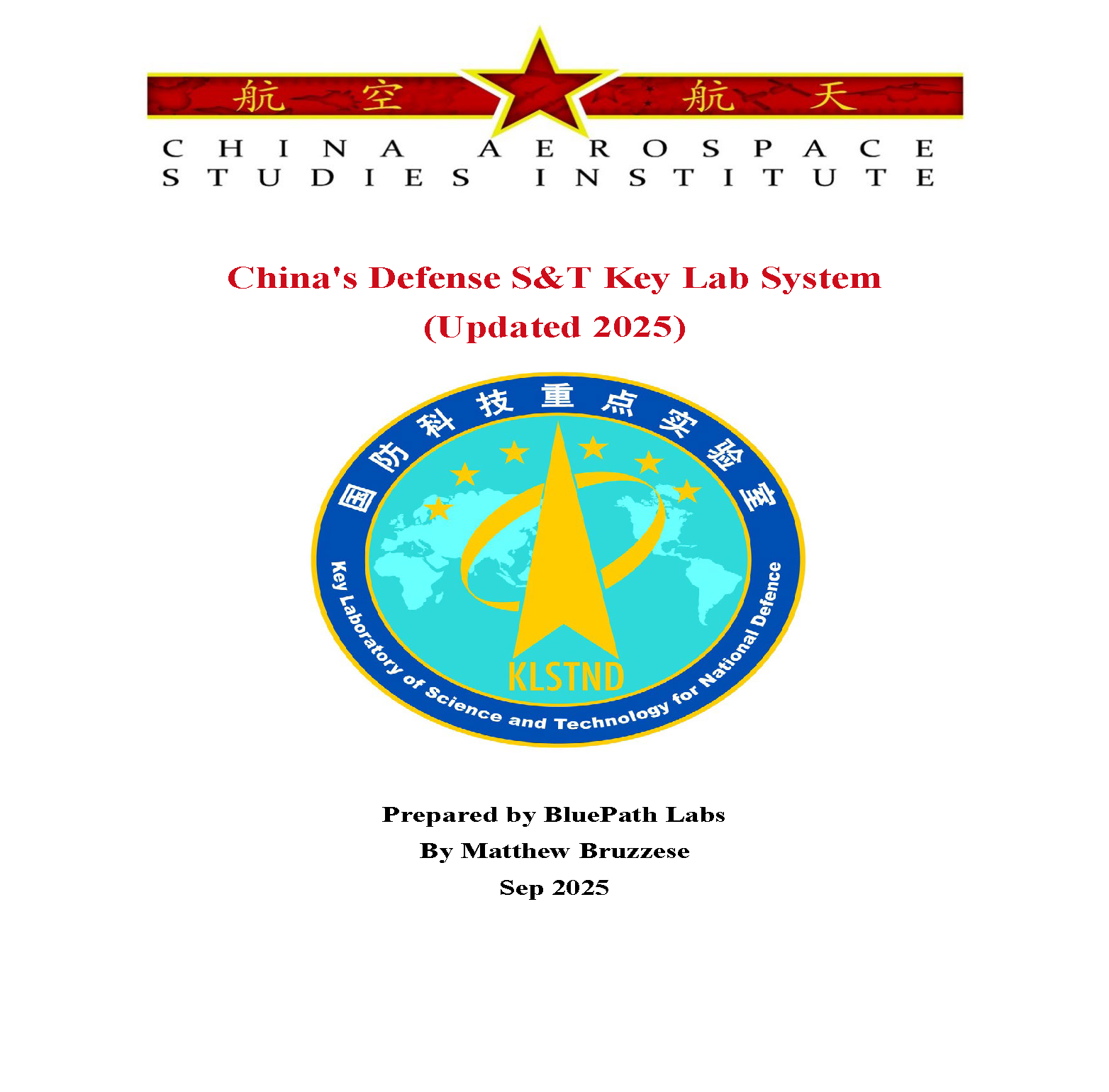This report represents an updated and significantly expanded revision of The PRC State & Defense Laboratory System Part Two: Defense S&T Key Lab Directory, which was released in early 2023. That report was in turn the second part of The PRC State & Defense Laboratory System: An Overview, which was released in 2022 and described the general structure and organization of the PRC’s state research system. Cumulatively, these reports focus on the PRC’s Defense S&T Key Laboratories (DSTKLs) [国防科技重点实验室], first established in 1991 as the PRC’s highest-level network of military labs. As the military counterpart to the PRC’s top-level State Key Lab (SKL) system, these labs receive the most funding and conduct what the PRC considers to be its most critical military research.
In the previous edition of this report, CASI utilized a list of 60 DSTKLs circulating on the internet, apparently from a since-deleted PRC government website. Accounting for duplicates and labs since downgraded in status left a sample of 56 labs. Extensive open-source research was conducted on each of these labs, providing details on each lab’s research foci, real-world applications of that research, funding, facilities and equipment, domestic and international collaborations, leadership and personnel, aliases, and any other information which may be of interest to researchers of PRC defense technology.
For this updated edition of the report, we added another 42 Defense S&T Key Labs, increasing the number of known DSTKLs by more than 40 percent. The same level of research was applied to these additional labs, bringing the total number of DSTKLs profiled in this report from 56 to 98. In addition, we recalculated the statistics presented in Part One of this report to incorporate these new labs.
Some labs contained considerably more information than others; some were very public-facing, with official websites and no shortage of laudatory state media coverage of their work, while others offered very little public information at all. Generally, university-run labs tended to be more open about their work than state-owned enterprise (SOE) labs, and military-run labs had less public information than either of these. The 42 additional labs profiled for the first time in this edition of the report tended, on the whole, to have less information publicly available (which in some cases is likely how they have managed to fly under the radar), although this was not true in all cases.
This work is intended primarily as a guide and reference work for analysts of PRC science and technology, translating detailed information on all of the PRC’s known Defense S&T Key Labs and gathering it in one place for the first time. While it shows what PRC officials and researchers emphasize in terms of research priorities, it is not intended to make qualitative judgements about their progress in this research. Much of the material in this report is comprised of dense technical jargon which requires analysis by specialists in that field and which may pose translation challenges. However, we have included such information in the hope that it will provide useful insights into the state and priorities of PRC strategic research when read by analysts who possess the requisite knowledge. CASI hopes that this data will both provide greater insight into the inner workings and priorities of DSTKLs, and also raise awareness of these labs and their attempts to collaborate with U.S. institutions.
Click here for the full report
